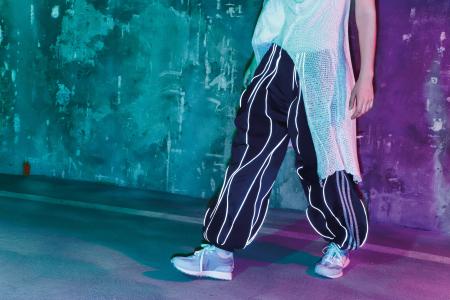Provide alternative solutions

Tuesday, February 18, 2025
The Technical Day held at Braslovče Primary School on February 23, 2024, in collaboration with the VOZIM Institute, was both practical and educational. The students were first introduced to the DRAJV app and analyzed traffic safety in the municipality. During the event, they created posters and presented proposals to improve safety, which were also supported by Mayor Tomaž Žohar. The students participated in activities at seven stations, including an e-scooter simulator and workshops led by representatives from the Police, the Braslovče Fire Department, and the Žalec Health Center. The VOZIM Institute ambassador, Janez Hudej, shared his personal story about a traffic accident, which gave the students a deeper insight into the seriousness of road safety. The event emphasized the importance of involving young people in shaping road safety solutions.
Sunday, February 16, 2025
REMOVING TRAFFIC CONGESTION
We conducted an experiment at the JRC (Ispra, Italy) in a controlled traffic environment to ensure safety. The test consisted of a platoon of vehicles with the following configuration:
A first vehicle with a human driver following his usual behaviour on the road.
A second vehicle equipped with Adaptive Cruise Control (ACC).
Several conventional drivers keeping their safe distance.
Multiple tests were conducted with different groups of drivers, who were given inertial driving training.
The results have been surprising:
✅ Increased road safety.
✅ Significant reduction of traffic jams (better mobility).
✅ Lower fuel consumption and reduced pollutant emissions.
✅ More relaxed driving and less stress for drivers.
We conducted an experiment at the JRC (Ispra, Italy) in a controlled traffic environment to ensure safety. The test consisted of a platoon of vehicles with the following configuration:
A first vehicle with a human driver following his usual behaviour on the road.
A second vehicle equipped with Adaptive Cruise Control (ACC).
Several conventional drivers keeping their safe distance.
Multiple tests were conducted with different groups of drivers, who were given inertial driving training.
The results have been surprising:
✅ Increased road safety.
✅ Significant reduction of traffic jams (better mobility).
✅ Lower fuel consumption and reduced pollutant emissions.
✅ More relaxed driving and less stress for drivers.

Thursday, February 13, 2025
The event focuses on an initiative aimed at improving road safety for young people, especially e-scooter and e-bike users. A survey by Zavarovalnica Triglav showed that only a little over half of young people feel safe when riding an e-scooter, and many have already experienced accidents. The lack of protective clothing, helmets, and reflective accessories contributes to greater risks. In the "Ne bluzi, z glavo kruzi" (Don’t Play It Cool, Use Your Head) initiative, the Vozim Institute, Zavarovalnica Triglav, and Yootree Creative agency collaborated to encourage safer e-scooter use among young people. By working with design students, they created a unique collection, "Dejmo se videt" (Let's Be Seen), of reflective clothing that combines safety with modern style. The collection was presented on October 17, 2024, at Ljubljana Fashion Week.The students used innovative reflective materials to design fashionable yet safe products. The collection was presented at Ljubljana Fashion Week, where it gained significant attention. The goal was to raise awareness about the importance of visibility in traffic, especially during the autumn and winter months. The initiative continues with workshops and public events, aiming for the products to become part of young people’s everyday style. The main goal of the initiative is to reduce the risk of accidents and encourage young people to prioritize safety while maintaining their personal style.

21 November 2024 09:00 – 23 November 2024 17:00
Rimini Exhibition Center
Italy

Sunday, June 23, 2024
Zavarovalnica Triglav od leta 2015 ponuja mobilno aplikacijo DRAJV, ki spodbuja in nagrajuje varno vožnjo. Aplikacija z uporabo tehnologij telematike spremlja hitrost vožnje, premike telefona in sile med vožnjo. Aplikacija DRAJV prispeva k varnejši vožnji z nadzorom hitrosti, analiziranjem voznih navad in ozaveščanjem uporabnikov, kar zmanjšuje tveganja za nastanek prometnih nesreč, ki ostajajo globalen izziv. Glavni vzrok prometnih nesreč v Sloveniji je še vedno neprilagojena hitrost vožnje, aplikacija DRAJV pa tako s spodbujanjem vožnje s primerno hitrostjo pozitivno vpliva na prometno varnost, saj so aplikacijo DRAJV na svojih vožnjah uporabili vozniki 8-10 % vseh osebnih vozil v Sloveniji.
En večjih globalnih problemov je tudi uporaba mobilnega telefona med vožnjo, kar povzroča neosredotočenost na dogajanje v prometu in močno povečuje tveganja za nastanek prometne nesreče. Aplikacija DRAJV spremlja in ocenjuje tudi pogostost uporabe telefona med vožnjo in nagrajuje voznike, ki telefona med vožnjo ne uporabljajo.
Aplikacija DRAJV obravnava glavne izzive varnosti na cestah, kot so prekoračitve hitrosti, uporaba telefona, sunkovita pospeševanja, zaviranja in vožnje v ovinek. Aplikacija je posebej prilagojena tudi za voznike motornih koles in tako spodbuja varno vožnjo motoristov, ki so med najbolj ranljivimi udeleženci v prometu.
Na podlagi anonimiziranih podatkov voženj uporabnikov, ki so skupno prevozili več kot 1,6 milijarde kilometrov, smo izdelali tudi interaktivno spletno orodje »DRAJV zemljevid«, ki identificira nevarne cestne odseke v Sloveniji z vidika hitrosti vožnje in drugih parametrov, ki jih spremlja aplikacija DRAJV.
En večjih globalnih problemov je tudi uporaba mobilnega telefona med vožnjo, kar povzroča neosredotočenost na dogajanje v prometu in močno povečuje tveganja za nastanek prometne nesreče. Aplikacija DRAJV spremlja in ocenjuje tudi pogostost uporabe telefona med vožnjo in nagrajuje voznike, ki telefona med vožnjo ne uporabljajo.
Aplikacija DRAJV obravnava glavne izzive varnosti na cestah, kot so prekoračitve hitrosti, uporaba telefona, sunkovita pospeševanja, zaviranja in vožnje v ovinek. Aplikacija je posebej prilagojena tudi za voznike motornih koles in tako spodbuja varno vožnjo motoristov, ki so med najbolj ranljivimi udeleženci v prometu.
Na podlagi anonimiziranih podatkov voženj uporabnikov, ki so skupno prevozili več kot 1,6 milijarde kilometrov, smo izdelali tudi interaktivno spletno orodje »DRAJV zemljevid«, ki identificira nevarne cestne odseke v Sloveniji z vidika hitrosti vožnje in drugih parametrov, ki jih spremlja aplikacija DRAJV.

Friday, June 21, 2024
We are solving the two main unsettled topics in Camera and LiDAR Systems and human vision in traffic situations. The internally developed Visibility Label, featuring a new universally applicable reference color, addresses the first topic, which is the lack of a universal method for quantifying the visibility of complex shapes such as cars, bikes, and busses. Crystal Glass Pigments provide a solution for the second unresolved issue, focusing on improving the functionality (i.e. visibility) of coatings on vehicles. By formulating new colors with this innovative additive, the coatings become significantly better visible for camera systems, human vision at night, and LiDAR systems 24/7.

Friday, June 21, 2024
The initiative “NEAR – New Education Approaches for Road Safety” is supported by 4 organisations from 4 countries to strengthen young people’s approaches to road safety in order to prevent deaths and injuries caused by road crashes. Our major objective is to promote safe mobility for young people, to improve their attitudes, habits and behaviour in traffic and to provide psychological support to survivors of traffic collisions and young people who have lost someone close in road crashes. Among young people we identify those who have experienced collisions and, together with other young people we develop preventive, supportive and educational models aimed at improving road safety and supporting the "invisible victims".
The project emphasises the approach of active citizenship to improve traffic safety. The results of the project will enable activities that will encourage young people to take appropriate action for safe mobility. We pay special attention to young people affected by the consequences of traffic crashes.
The project emphasises the approach of active citizenship to improve traffic safety. The results of the project will enable activities that will encourage young people to take appropriate action for safe mobility. We pay special attention to young people affected by the consequences of traffic crashes.

Thursday, June 20, 2024
The safety and interaction of cyclists during infrastructure conservation and repair works are significantly impacted by changes made, potentially leading to new conflicts between cyclist traffic and vehicles.
The BIKEFLOW project's objective is to enhance cyclist safety in critical areas identified within modified sections during ongoing conservation efforts. By employing video analytics and Artificial Intelligence, we can examine the movements and potential interactions of cyclists and vehicles. This technology utilizes video analysis to forecast safety levels before incidents happen, enabling the identification of vehicles, routes, and speeds, with the capability to present data in real-time or upon request. In light of these analyses, permanent cameras have been installed at the junction of N-110 and N-502 to conduct surrogate safety assessments. This involves applying various configurations to the route to analyze the behavior of road users (both vehicles and cyclists) and to train an AI model that determines the most suitable layout configuration. The findings are then applied to adjust signage, lower speed limits, establish protected lanes at critical junctures, or modify paths as necessary.
The BIKEFLOW project's objective is to enhance cyclist safety in critical areas identified within modified sections during ongoing conservation efforts. By employing video analytics and Artificial Intelligence, we can examine the movements and potential interactions of cyclists and vehicles. This technology utilizes video analysis to forecast safety levels before incidents happen, enabling the identification of vehicles, routes, and speeds, with the capability to present data in real-time or upon request. In light of these analyses, permanent cameras have been installed at the junction of N-110 and N-502 to conduct surrogate safety assessments. This involves applying various configurations to the route to analyze the behavior of road users (both vehicles and cyclists) and to train an AI model that determines the most suitable layout configuration. The findings are then applied to adjust signage, lower speed limits, establish protected lanes at critical junctures, or modify paths as necessary.

Wednesday, June 19, 2024
Asociatia Drum Sigur analyzed and researched the following design errors:
- incorrect use of signs for yielding priority in intersections (Give Way and Stop signs) (error found in most countries of the world)
- the formulas used to calculate the length of acceleration/deceleration lanes at road junctions are incorrect (they do not take into account the impact of heavy vehicle traffic, as well as the volume of traffic flows) (error found worldwide)
- the use of staggered pedestrian crossings at traffic lighted intersections has negative effects on pedestrian traffic in most cases. (case analysis for all the staggered pedestrian crossings in Bucharest)
- identification of design and execution errors for T-type intersections, roundabouts, turbo-roundabouts or interchanges in some cities in Romania.
- analyzing some design errors on certain streets in Bucharest and proposing measures to improve road safety and traffic flow.
- incorrect use of signs for yielding priority in intersections (Give Way and Stop signs) (error found in most countries of the world)
- the formulas used to calculate the length of acceleration/deceleration lanes at road junctions are incorrect (they do not take into account the impact of heavy vehicle traffic, as well as the volume of traffic flows) (error found worldwide)
- the use of staggered pedestrian crossings at traffic lighted intersections has negative effects on pedestrian traffic in most cases. (case analysis for all the staggered pedestrian crossings in Bucharest)
- identification of design and execution errors for T-type intersections, roundabouts, turbo-roundabouts or interchanges in some cities in Romania.
- analyzing some design errors on certain streets in Bucharest and proposing measures to improve road safety and traffic flow.

Monday, June 17, 2024
Our experience shows that most road accidents are caused by human error. Various analyses carried out by ALSA show that most road accidents are caused by inappropriate driver behaviour.
In order to manage road safety proactively, it is necessary to have a detailed and rigorous knowledge of the performance and behaviour of each driver in order to know their skills and behaviours, as well as to track their evolution over time.
To this end, ALSA has invested in technology in more than 3,700 vehicles in Spain that allows us to measure speeding, monitor various parameters that reflect driving style and detect various driver behaviours using innovative smart camera technology.
These smart cameras are based on "machine vision” and "artificial intelligence" (MV+IA) systems, which allow us to detect 40 types of driver behaviour and are particularly noteworthy for their innovation.
The data provided by the aforementioned technologies is used to calculate the risk profile of each driver. ALSA defines personalised actions for each driver: training, assignment to certain vehicles and routes, greater follow-up and monitoring, etc.
In addition, each driver has access to the data available on their own performance through an internal app (called "MiAlsa"). In this way, drivers can consult information on their own performance (consumption, driving styles, speeding, incidents, etc.).
In order to manage road safety proactively, it is necessary to have a detailed and rigorous knowledge of the performance and behaviour of each driver in order to know their skills and behaviours, as well as to track their evolution over time.
To this end, ALSA has invested in technology in more than 3,700 vehicles in Spain that allows us to measure speeding, monitor various parameters that reflect driving style and detect various driver behaviours using innovative smart camera technology.
These smart cameras are based on "machine vision” and "artificial intelligence" (MV+IA) systems, which allow us to detect 40 types of driver behaviour and are particularly noteworthy for their innovation.
The data provided by the aforementioned technologies is used to calculate the risk profile of each driver. ALSA defines personalised actions for each driver: training, assignment to certain vehicles and routes, greater follow-up and monitoring, etc.
In addition, each driver has access to the data available on their own performance through an internal app (called "MiAlsa"). In this way, drivers can consult information on their own performance (consumption, driving styles, speeding, incidents, etc.).